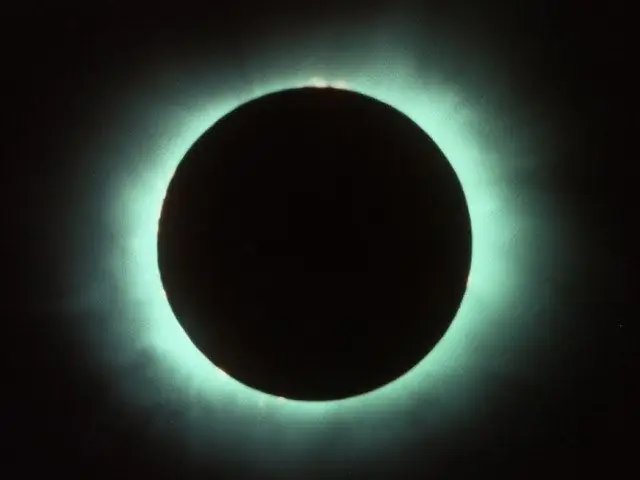- Author Antonio Harrison [email protected].
- Public 2023-12-16 07:44.
- Last modified 2025-01-22 21:44.
An eclipse means a natural phenomenon in which the Moon, being between the Sun and the Earth, closes the solar disk from an observer on the planet. A total solar eclipse occurs when the Sun is completely covered. To see this phenomenon, you need to be in a narrow strip of the moon's shadow.

At this moment, in the daytime, the surface of the Sun suddenly begins to be shaded by a dark spot, the air rapidly darkens and grows colder, stars appear, the sky takes on a night view. A bright glow appears around the disk of our star. This is the visible corona of the sun. All this lasts a few minutes, then the Moon floats on, and the Sun reappears in the sky.
A solar eclipse is a rather rare phenomenon, since it can only be observed when several factors coincide. Firstly, it occurs only during the new moon, when the side of the moon facing the planet is not illuminated, and it is not visible in the sky. Secondly, due to the elliptical orbits of the Earth and the Moon, the distance between objects is constantly changing, which means that the diameter of the dark spot from the lunar shadow is greatly increased or decreased. Moreover, when the distance of the natural satellite from the planet becomes maximum, a total eclipse does not occur, since the shadow does not reach the surface of the Earth. In addition, although at first glance it seems that an eclipse should occur every new moon, this is not the case. The point here is that the orbital axes of the planet and the satellite have different planes. The moon on a new moon often passes either above the sun or below, and an eclipse will occur only when they intersect.
Scientists have calculated that in a hundred years, approximately 237 different eclipses of the Sun occur on the surface of our planet, of which no more than sixty-three are total. From one point on Earth, a total solar eclipse can be observed no more often than once every three hundred years. For example, in Moscow such a phenomenon was observed on March 20, 1140, then on June 7, 1415 and on August 19, 1887. In addition, a strong eclipse with phase 0, 96 was noted in Moscow in July 1945. Muscovites will be able to admire the next such phenomenon no earlier than October 16, 2126.
Currently, all future eclipses are calculated for many years ahead. Before the phenomenon of 2126, four more total eclipses will occur on the territory of the Russian Federation, but, unfortunately, they will be visible only in remote regions of Siberia and the Arctic.






